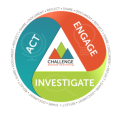Active Learning is a constructivist-based approach to learning that emphasizes the importance of learning through experiences, activities, discussions, and other hands-on techniques. Instead of passively receiving information verbatim from the teacher through traditional lectures, students actively participate in activities that encourage critical thinking, problem-solving, and collaboration. The goal is to shift from a passive learning environment to one where students are actively involved and invested in their learning
Key Approaches to Active Learning:
Inquiry Project-Based Learning (PjBL) What it is: Students explore topics by asking questions and conducting investigations, often resulting in a project or presentation.
How it works: Students take the lead in their learning, researching, and presenting their findings through hands-on projects.
Problem-Based Learning (PBL) What it is: Students tackle real-world problems, applying their knowledge to find solutions.
How it works: Instead of traditional lectures, students work together to solve problems, promoting critical thinking and collaboration.
Challenge-Based Learning (CBL) Case-Based Learning and Conducting Experiments What it is: Students analyze real or hypothetical cases and conduct experiments to deepen their understanding.
How it works: Learning is contextualized through practical examples, enhancing problem-solving and application skills.
Flipped Classroom Approach What it is: Traditional teaching is flipped, with students reviewing materials before class and using class time for interactive activities.
How it works: Lectures are moved outside the classroom, allowing more in-class time for discussions, projects, and application of concepts.
What it is: Students become "experts" in a specific topic and then share their expertise with their peers.
How it works: Each student is responsible for learning part of the material, promoting collaboration as they piece their knowledge together.
What it is: Students individually think about a question, discuss it with a partner, and then share their thoughts with the entire class.
How it works: Encourages reflection, collaboration, and the articulation of ideas.
Role-Playing & Simulations What it is: Students take on specific roles or engage in simulated scenarios.
How it works: By embodying different roles or scenarios, students gain practical insights and develop problem-solving skills.
Contributors on this project:





